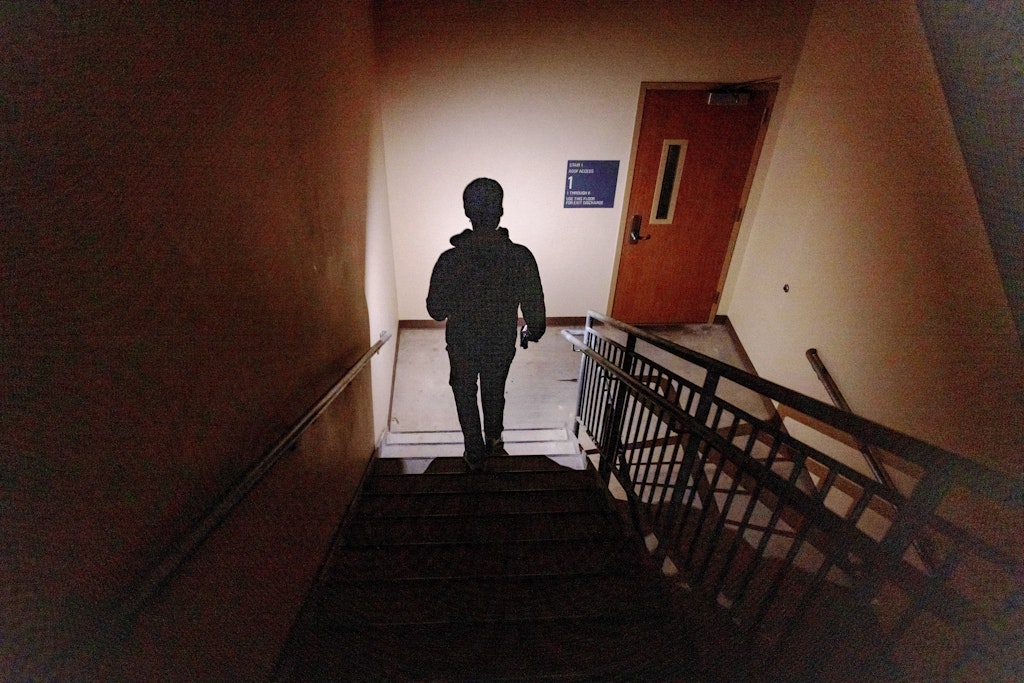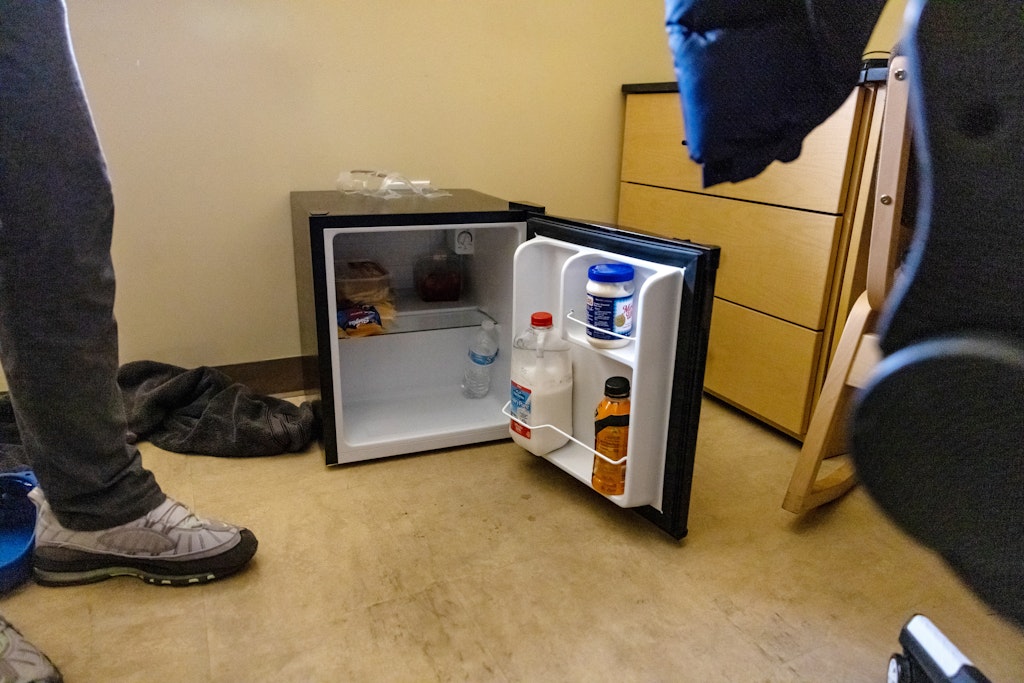WEATHER
College students stuck in chaos
At first, the snow was exciting, ethereal, dreamy, said college students who bundled up to play like children in the unusual Texas snowstorm.
Then the power went out. Pipes burst. Toilets stopped working. Food and water became scarce. The winter wonderland had transformed into a frozen hellscape.
After freezing temperatures, snow and ice left millions without power and even more struggling to access drinkable water, college students living on campuses across the state said they struggled to get basic necessities. While some campuses slowly regained power Thursday, many dorms still lacked access to consistent water and food.
“I feel like I’m in hell, like I’m in prison,” said Texas State University freshman Nicholas Ware, who spent three days without heat and power until Wednesday evening. He was living off two meals provided each day by the university and some chips he purchased from a gas station. He hadn’t taken a shower since Sunday due to a lack of hot water and electricity in the shared bathrooms.
“When you’re in here all the lights are off, there’s no air, you can hear every movement in the building being made,” he said. “You can’t talk to too many people cause you don’t want your phone to die. ... Sleeping is like the one thing you can do.”
Universities tried to provide students with food and shelter, opening warming centers in campus buildings and providing to-go meals from dining halls. But many were battling dwindling food supplies, staffing shortages as employees struggled to get to work, lack of water and power outages. The situation was particularly challenging for students in large residence halls who were unable to see their families or access supplies like extra clothing, food or a car.
‘Huge scramble’
Texas Tech University officials told students Thursday on Twitter that campus may be subject to rolling blackouts as they announced the campus would remain closed Friday and in-person classes moved online or were canceled. Texas A&M University prohibited laundry and told students to avoid showers as they continued to deal with critically low water levels. After San Antonio issued a boil water notice, St. Mary’s University told students Wednesday evening that they had a limited supply of water bottles. Students received three bottles each, said sophomore Zane Smith. Extremely low water pressure also made showers impossible, and students used melted snow to manually flush toilets.
Unstable cell and internet service made it difficult for universities to update students, said University of North Texas student Lexi Bednar.
“It was kind of like a huge scramble of everybody being like ‘What’s going on?’ ” she said.
Ánh Adams, another freshman at Texas State, was forced to evacuate her dorm after a pipe burst on the floor above her. She and dozens of other students spent hours in the lobby of another residence hall before she was relocated to a residence hall that doesn’t have heat or internet access. She grabbed all the food in her dorm room and a heated blanket. She also quickly crocheted herself a hat to stay warm. On Thursday it was still unclear when she’d be able to return to her room.
Other students moved around the San Marcos campus chasing electricity to stay warm and charge their phones, including Adalia Williams, another Texas State freshman. Her Ugg boots — the only warm shoes she has with her — were wearing down from all the wet snow and she was running out of warm clothes because laundry was limited. She said it was difficult to access her eighth-story dorm room because the stairwells are outside and were covered in ice and the elevators were broken even before the storm hit. Texas State officials did not return a request for comment.
When Williams’ toilet broke, she was forced to use a cup in an emergency. But she said the biggest struggle was finding food. She said lines for to-go meals at the two campus dining halls were too long to wait out in the cold. Nearby restaurants were closed, and the shelves were empty at gas stations and grocery stores.
“It’s pretty much small things like sunflower seeds and peanuts,” Williams said, describing the slim options available at a nearby Buc-ee’s gas station. “We’re grateful for anything, but you know, that’s not really gonna fill us up.”
At one point Williams and some friends drove to nearby Kyle, a city north of San Marcos, to find food and ended up waiting at a Jersey Mike’s for two hours because the restaurant ran out of bread and needed to make more.
At Sam Houston State University in Huntsville, students were without water, which limited their access to toilets. Freshman Bryce Sidney said students had to walk to the student center nearby to use the bathroom.
“I usually make a trip and like to plan it out,” Sidney said. “It’s like ‘Okay, I’m gonna go get my meal for lunch or dinner and then I’m gonna swing by the student center.”
On Thursday, the school placed portable toilets outside the residence hall.
Sidney said his residence hall experienced bursting water pipes, though he didn’t have to relocate. He hadn’t taken a shower and had been brushing his teeth using water he collected in a bowl in his dorm room. University officials did not return a request for comment.
Off-campus problems
Some Texas students living off campus faced different challenges as they were forced to fend for themselves without the help of parents or university administrators. Early last week, Texas A&M University said via Twitter it was only serving meals to students who live on campus. On Friday, the university told the Tribune that was a miscommunication born out of safety concerns due to icy conditions. A spokesperson said dining halls were open to all students.
Meanwhile, some students in off-campus housing who were experiencing power and water issues struggled to get answers and assistance from apartment management companies.
Aggie roommates Cameron Herring and Andrew Gonzales said they were forced to relocate to a hotel after a pipe burst in their off-campus apartment, Callaway Villas, damaging more than 60 units. They said the apartment complex had not helped students relocate or offered to prorate rent, despite the uninhabitable conditions. When Herring posted questions asking for help on a private Facebook group hosted by the building managers, he said the post was removed and settings were changed so students couldn’t post anymore without the building manager’s approval.
“We can understand the pipes flood and they freeze. And it’s not necessarily their fault,” Herring said. “But it’s just frustrating that they just kind of left us in the dark, and then like, deleting our posts at a time like this? Like, really?”
Management at the apartment complex did not respond to requests for comment.
As the days wore on, students on campus at Texas A&M said some residence hall conditions were descending into chaos as students continued to go stir crazy, and more off-campus residents showed up to access heat, power and water. Junior Matt Austin said common areas were filled with garbage, ovens and microwaves were broken and furniture was mistreated as icy road conditions made it difficult for custodial staff to come to campus. Regular college antics, like loud students running up and down hallways, escalated.
But the most concerning issue he noticed was as students tried to push through the crisis, their diligence against the COVID-19 pandemic waned.
“This has made people forget about COVID precautions because I would definitely say that mask usage is way down,” he said. “People have just assumed that that’s not something they need to worry about right now.”

